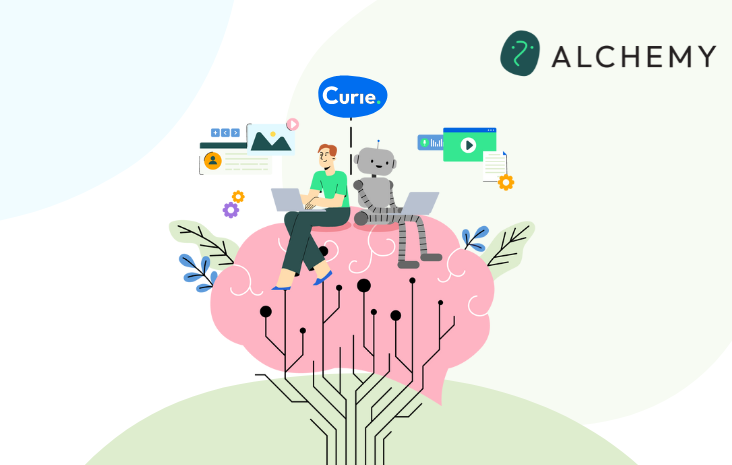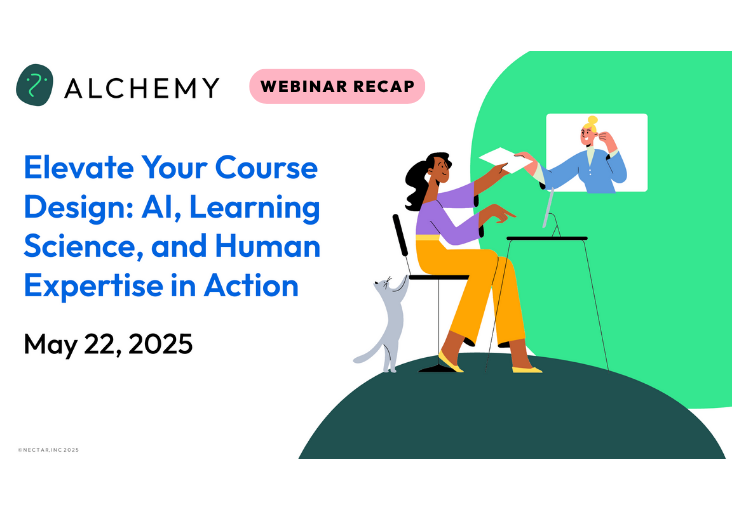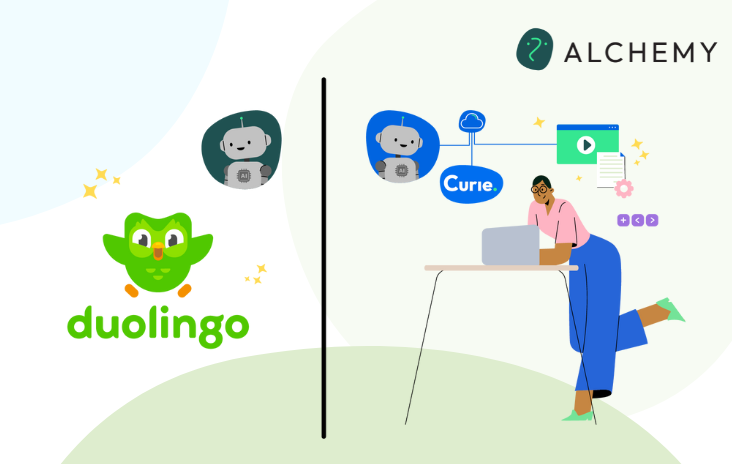Article
Breaking Down Barriers: How Curie Empowers Faculty AI Adoption

The AI Teaching Paradox: Faculty See the Potential, But Feel Stuck
Artificial intelligence (AI) is reshaping education, yet many faculty struggle to integrate it effectively into their teaching. According to the “Digital Education Council’s Global AI Faculty Survey 2025” (N 1,681), 61% of faculty have experimented with AI in teaching, but most use it minimally to moderately. The reason? Faculty face real barriers to meaningful AI adoption.
When asked why they don’t use AI in their teaching, faculty identified their two biggest obstacles:
1. “I don’t have time or resources to explore AI” (40%)
2. “I am not sure how to use AI in my teaching” (38%)
These responses reveal a clear gap: faculty recognize AI’s potential, but without time-efficient solutions and practical guidance, AI remains an untapped resource. This is where Alchemy’s platform, Curie, changes the game.
Faculty Time is Limited—Curie Puts AI to Work for Them
One of the biggest frustrations for faculty is time. AI adoption often feels like another task on an already overloaded plate.
HOW CURIE HELPS:
Curie eliminates time-consuming barriers by providing ready-to-use, AI-enhanced teaching resources—from syllabi and rubrics to active learning and assessments. Rather than faculty having to start from scratch, Curie enables them to generate customized, structured, research-backed teaching materials in minutes. This isn’t just about efficiency—it’s about making AI work for faculty, not add to their workload.
Example: Need a well-designed case study assignment? Instead of spending hours developing prompts, refining rubrics, and considering AI integration, Curie’s AI-powered Teaching Optimizers guide faculty through a structured process, ensuring quality without the time drain.
Uncertainty About Student AI Use? Curie Provides Built-In Guidance
Even for faculty open to AI, a major hurdle is not knowing how to manage AI effectively and responsibly in the learning experiences they offer.
HOW CURIE HELPS:
Many faculty worry about how to structure AI use in assignments—should students use AI? How much? In what ways? Curie directly addresses this through the AI Assessment Scale (AIAS; Perkins et al., 2024), which is embedded into many of its Teaching Optimizers.
The AIAS provides a structured way to integrate AI into assignments at the level an instructor is comfortable with—from No AI Use to Full AI Exploration. This ensures that AI integration is intentional, transparent, and aligned with learning goals.
Example: A faculty member designing a research paper assignment can use Curie to structure it at different AI integration levels—whether students are expected to use AI for brainstorming and outlining or are required to engage deeply with AI tools in their analysis.
AI Literacy Through Constructive Use—Not Just Policy
Institutions are still working to define AI policies, but faculty need more than guidelines—they need hands-on ways to develop AI literacy in themselves and their students.
HOW CURIE HELPS:
By embedding AI as a tool for constructive learning experiences, Curie moves AI out of the abstract and into real-world classroom applications. Rather than simply prohibiting AI or ignoring it, faculty can actively shape AI literacy by embedding it in meaningful ways.
Example: Group projects in Curie can be scaffolded to help students learn when and how to use AI responsibly, rather than defaulting to an all-or-nothing approach.
Next Steps: Try Curie & Level Up with the LEAD AI Literacy Credential
The reality is clear: faculty want to integrate AI but need the right support, resources, and structure to do so.
✔ Curie makes AI adoption effortless by providing efficient resource creation and built-in AI integration frameworks.
✔ The AI Assessment Scale empowers instructors to introduce AI at a level that makes sense for their courses and respective assessments.
✔ The new LEAD AI Literacy Credential (launching Spring 2025) will help faculty build deeper expertise in responsible AI use for teaching and learning.
Want to see AI-enhanced teaching resources in action? Check out our AI-Enabled Optimizer Collection in Curie.
Let’s move past AI hesitation and into practical, time-saving, pedagogically sound AI integration. How is your institution supporting faculty with AI? Let’s discuss.



